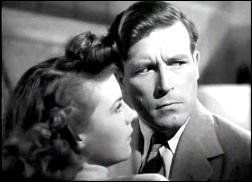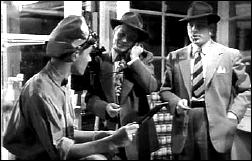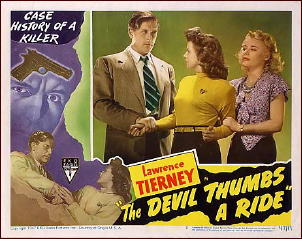Sat 4 Apr 2015
Mike Nevins on “The Judge and His Hangman,” SIMENON, JOHN DICKSON CARR, and DANGER (the TV series).
Posted by Steve under Authors , Columns , TV mysteries[24] Comments
by Francis M. Nevins
I own very few European crime novels in both their original language and in English, but one of those is Der Richter und Sein Henker or, as it’s known over here, The Judge and His Hangman (1952; U.S. edition 1955), the first novel of Swiss playwright Friedrich Duerrenmatt (1921-1990).
I read it in both languages many years ago and again last month. It’s about Hans Bärlach (whose last name in English is missing the umlaut), Kommissär of the Swiss police, a man clearly near death, and his 40-year-long struggle against a sort of existential criminal who committed a motiveless murder in front of the Kommissär’s eyes and dared Bärlach to pin it on him.
More than sixty years after its first publication the book is still a compelling read, and the German edition (designed for students who are learning the language) adds several dimensions to what readers of the translation are offered, including two maps that make clear the relationship to each other of the various small towns near Bern where much of the story takes place.
Reading the German side by side with Therese Pol’s English version also reveals where Pol now and then goes her own way. At the end of Chapter 11 (Chapter 8 in the translation), the diabolical Gastmann breaks into Bärlach’s house beside the Aare River and steals the Kommissär’s file on him. “I’m sure you have no copies or photostats. I know you too well, you don’t operate that way.â€
A procedural this novel ain’t. He throws a knife at Bärlach, just missing him, and goes his way. “The old man crept about the room like a wounded animal, floundering across the rug on his hands and knees…, his body covered with a cold sweat.†He moans softly in German: “Was ist der Mensch? Was ist der Mensch?†This simply means “What is man? What is man?†but Therese Pol expands it to: “What sort of animal is man? What sort of animal?â€
That’s not too much of a stretch compared with the last chapter where Bärlach learns that his young assistant Tschanz “sei zwischen Ligerz und Twann unter seinem von Zug erfassten Wagen tot aufgefunden worden,†meaning that between two of the villages shown on the first map he was found dead under his car, which had been struck by a train.
In English the report is simply “that Tschanz had been found dead under his wrecked car….†The train has vanished, but at least Ms. Pol doesn’t make up Duerrenmatt’s mind for him on whether Tschanz’s death was an accident or suicide. Such are the joys of reading a book in two languages at once. If only my French were good enough to allow me to read Simenon in his own tongue!
You don’t need to be a linguist to catch some amazing blunders in the versions of Simenon that we get to see. In L’Affaire Saint-Fiacre, first published in French in 1931 and first translated by Margaret Ludwig as The Saint-Fiacre Affair in the double volume Maigret Keeps a Rendezvous (1941), a threat on the life of a countess brings Maigret back to the village where he was born and raised.
Very early in the morning he wakes up in the village inn and, purely for professional reasons, gets ready to attend Mass in the church where he’d been an altar boy. He goes downstairs and, in one of the later translations, the innkeeper asks him: “Are you going to communicate?†Even one who knows no French and nothing of Catholicism should be able to render the question in English better than that.
I don’t remember the title of the novel or who translated it but I vividly recall another Simenon where Maigret wakes up in yet another country inn and phones down for, as he puts it in English, “my little lunch.†Again, you don’t need to know more than a soupçon of French to figure out what the translation of petit déjeuner should be.
As this column is being cobbled together I’m in the middle of going over The John Dickson Carr Companion. And learning some odd trivia about Carr’s novels and stories that had never struck me before. How many of you remember that in the Carter Dickson novel She Died a Lady a gardener claims that on the previous night he went to see the movie Quo Vadis? The book was published in 1943 but, according to the Companion, its events take place in 1940.
Either way, Carr certainly couldn’t have been referring to the Quo Vadis? that we remember today if we remember the title at all, the 1951 Biblical spectacular that starred Robert Taylor and Deborah Kerr. There was a German silent version of the same story, released in 1924 and starring Emil Jannings, but what would a German silent be doing playing in England long after silents had been displaced by talkies and at a time when England and Germany were at war? More important question: What was Carr thinking?
The adaptations of Carr’s work dating back to the golden age of live TV drama back in the Fifties are not covered in the Companion, at least not in any detail. I happen to have some information on that subject, and chance has now given me an excuse to share it. Anyone remember Danger?
It was a 30-minute anthology of live teledramas, broadcast on CBS for five seasons (1950-55). My parents hadn’t yet bought their first set when the series began, and when it went off the air I was a child of 12 who hadn’t yet even discovered Sherlock Holmes and Charlie Chan at my local library.
I don’t think I ever watched the program, certainly not with any regularity, but I vaguely remember that one of its shticks was a background score of solo guitar music played by a guy named Tony Mottola (1918-2004). Obviously the producers of the show were hoping to duplicate the success of the CBS radio and TV classic Suspense, and the two Carr tales that were broadcast on Danger happened to be radio plays that he had written for Suspense back in the Forties. “Charles Markham, Antique Dealer†(January 2, 1951), was based on the radio play “Mr. Markham, Antique Dealer†(Suspense, May 1, 1943) and starred Jerome Thor, Marianne Stewart and Richard Fraser.
The director was Ted Post (1918-2013), who later moved into filmed TV series like Gunsmoke, Have Gun Will Travel and Rawhide and, thanks to impressing Clint Eastwood with his Rawhide work, got hired to direct big-budget Eastwood features like Hang ’em High (1968) and Magnum Force (1973).
We don’t know who directed “Will You Walk Into My Parlor?†(February 27, 1951) but it came from Carr’s radio drama of the same name (Suspense, February 23, 1943). The script was first published in Ellery Queen’s Mystery Magazine, September 1945, and collected in Dr. Fell, Detective and Other Stories (1947) and, after Carr’s death, in The Dead Sleep Lightly (1983).
The cast was headed by Geraldine Brooks, Joseph Anthony and Laurence Hugo. Among the other top-rank mystery writers whose stories were adapted for Danger were Philip MacDonald, Wilbur Daniel Steele, A.H.Z. Carr, Anthony Boucher, MacKinlay Kantor, Steve Fisher, Q. Patrick, James M. Cain, Raymond Chandler and Roald Dahl.
The roster of authors who scripted original teleplays for the series included Paddy Chayefsky, Reginald Rose and Rod Serling, and among the directors who rose from this and other live teledramas to Hollywood household-name status were John Frankenheimer and Sidney Lumet.
The final episode of Danger was a live version of Daphne DuMaurier’s 1952 short story “The Birds,†which Alfred Hitchcock later adapted into one of his best-known films. I can’t imagine anything like Hitchcock’s bird effects being possible on live TV, but either I was watching something else on the night of May 31, 1955 or I went to bed early. If anything from this series is available on DVD, I haven’t heard of it.
Considering the dozens of scripts Carr wrote for Suspense as a radio series, one might have expected a pile of his radio scripts and short stories to have been used when the program became a staple item on prime-time TV.
In fact only one of his radio dramas and one of his short tales were adapted for the small screen. Among the earliest of the TV show’s episodes was “Cabin B-13″ (March 16, 1949), which starred Charles Korvin and Eleanor Lynn and was based on perhaps the best known and most successful Carr radio drama, first heard on Suspense on May 25, 1943 and collected in The Door to Doom and Other Detections (1980).
The second and final Carr contribution to Suspense was “The Adventure of the Black Baronet†(May 26, 1953), an adaptation of the Sherlock Holmes story written by Carr in collaboration with Sir Arthur Conan Doyle’s son Adrian (who according to Douglas G. Greene’s Carr biography did most of the writing) and first published in Collier’s for May 23, 1953, just a few days before the televersion.
As might have been expected, Basil Rathbone reprised his movie and radio role as Holmes. It might also have been expected that Nigel Bruce would have played Dr. Watson as he had so many times in the movies and on radio. I don’t know why he didn’t, but since he died only a few months later (October 8, 1953), the reason might have had to do with his health. In any event the Watson of this Suspense episode was played by Martyn Green of Gilbert & Sullivan fame.
As far as I’ve been able to find, Carr’s contributions to 30-minute live TV drama are limited to these four episodes. If any of his short stories or radio plays became the bases of filmed 30-minute dramas, I haven’t found them. There are two fairly well-known teledramas at greater than 30-minute length that owe their origins to Carr, but this column is long enough already so I’ll save them for next time.


